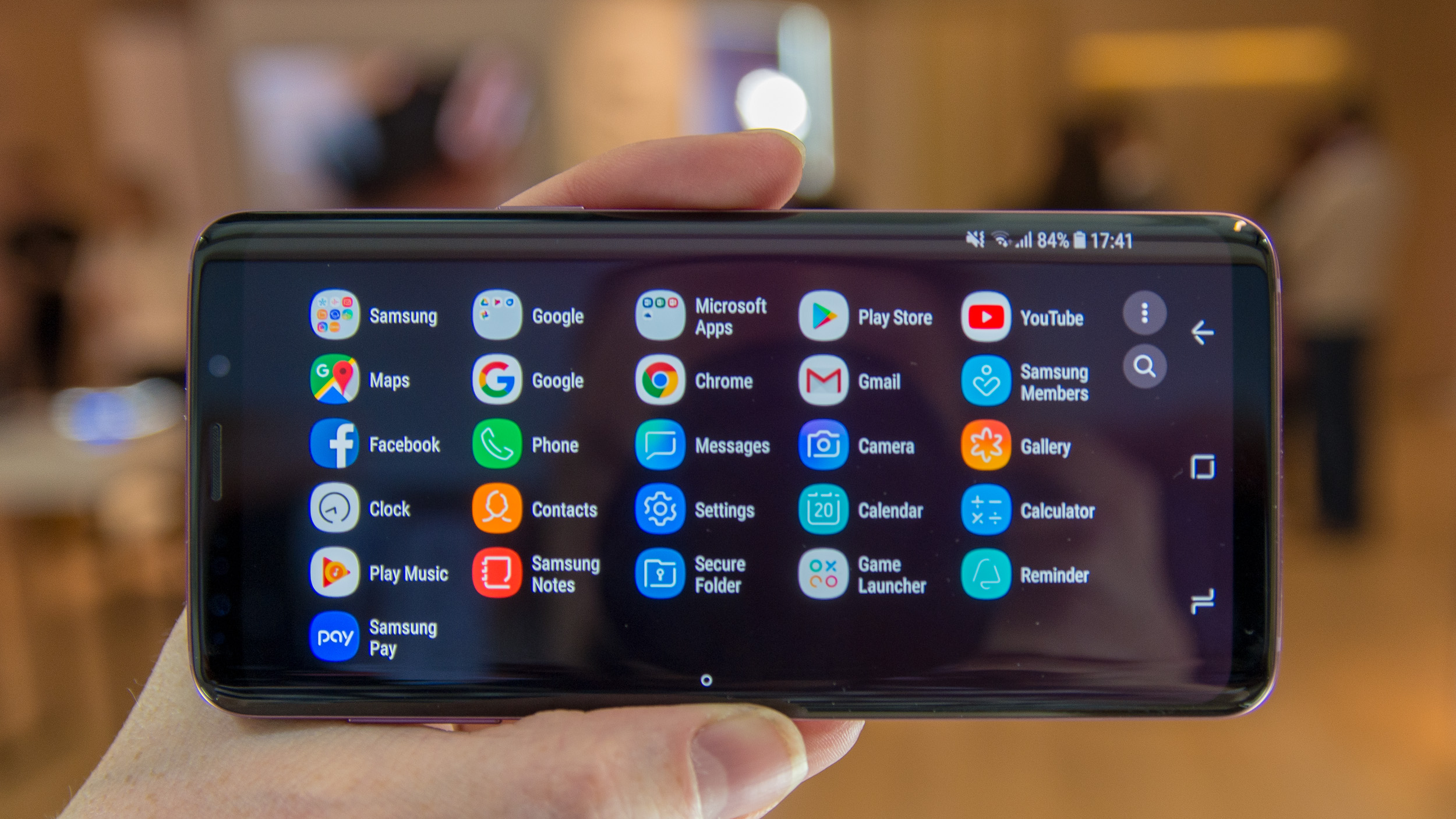Samsung Galaxy S9 review: Can you put a price on perfection?
Samsung does it again with another stunner of a smartphone
Just like the S8 before it, the Samsung Galaxy S9 is the best phone in the world, with lightning-fast performance, a stupendous camera and a lovely design. Unfortunately, it hasn't done enough to surpass its predecessor, which is still almost as impressive whilst being significantly cheaper.
-
+
The fastest Android phone we've ever seen; Amazing low-light camera; Slick features
-
-
Doesn't do enough to better last year's Galaxy S8

It's hard to argue with the fact that the Samsung Galaxy S9 is the hottest launch of 2018. Coming immediately after the Galaxy S8 - which was considered by many critics (IT Pro included) to be the best phone of last year - the S9 has some pretty big shoes to fill.
On the surface, however, there's not much to differentiate the S9 from its immediate predecessor. The physical design is all but identical, and looking at the spec sheet, it's hard to pick out any particular improvements that would give it a significant edge (no pun intended) over the S8. There are a number of improvements and tune-ups, to be sure, but no big, headline features to shout about.
Samsung Galaxy S9: Design
One of the most common complaints that gets levelled against the Galaxy S9 is that it's basically the same device as the Galaxy S8, and this is true - from a design perspective, at least. Samsung has retained the edge-to-edge display and curved-edge construction which have become signature hallmarks of the Galaxy S range's mould-breaking aesthetic, but it hasn't noticeably changed it. Lay the S9 down next to its predecessor, and you'd be hard pressed to tell them apart on first or even second glance.
The only changes that have been made are minor revisions to the S8's design, rather than significant upgrades. For example, the fingerprint sensor now sits below the camera lens rather than beside it, as many S8 users complained that they were inadvertently smudging their cameras while unlocking the device.
That's the most noticeable change, but another subtler tweak is that Samsung has made the screen even bigger than the S8, by shaving fractional amounts from the size of the S9's top and bottom bezel. Kudos to Samsung for the feat of engineering, but it's an imperceptible reduction, and it's not going to make any real difference to the experience compared to the S8.
The dimensions are virtually identical, too. Measuring 8.5mm and 163g, it's half a millimetre thicker than its predecessor and 10g heavier, but the difference is beyond negligible. It's still thin, light and lovely. It's not the slimmest phone on the market, but thanks to those gorgeous, tapered edges, it feels like it is.

This isn't a criticism, though; the Galaxy S8 is hands-down the best-looking phone on the market, so the fact that Samsung hasn't decided to reinvent the wheel is actually something of a relief. Instead, they've made a series of small, sensible adjustments to refine an already near-perfect package.
The company has also now released the handset in a vast array of colours, including Sunrise Gold, its most recent colourway. This new version will nicely complement the other new colours available - Midnight Black, Coral Blue, Lilac Purple and Titanium Grey, which have been launched at regular intervals since it was announced.
"People want to be able to express their style and personality through their technology and colour is a big part of that personalisation," Younghee Lee, CMO and executive vice president of Samsung Electronics said. "The new edition extends the colour offerings of Galaxy S9 and S9+ with a vibrant style that embrace a modern and classic feel."
Not only is Sunrise Gold its newest colour, but it also comes with a fancy new finish. Samsung calls this "satin gloss," which offers "a tranquil glow and glimmer". We're not entirely sure what this means, but it sounds worth a look at, even if it might not be everyone's cup of tea.
Although not coming to the UK, Samsung also says it will be announcing a Burgundy Red edition in Korea and China later this month, with a restrained gloss finish, which we assume means it's a little bit shiny. We presume all these new colours are to try and keep up with Apple's growing suite of coloured devices.
Samsung Galaxy S9: Display
Likewise, the S9's screen is also a dead ringer for the one carried by its predecessor, with a 5.8in (or 6.2in in the case of the S9 Plus) QHD+ Super AMOLED panel and an aspect ratio of 18.5:9.
As with the design, there's little to complain about - Samsung's choice to stick to a 2,960 x 1,440 resolution is a smart one, ensuring that the display is crisp without being an unnecessary drain on the battery. Just like previous devices, you can swap between three resolution settings - 1,480 x 720, 2,220 x 1,080 and the aforementioned 2,960 x 1,440 - on the fly. It's set to the middle resolution by default, so if you want the absolute maximum in fidelity, you'll want to go into the settings and change it.
Samsung's displays are universally top-notch, so it's no surprise that the S9 is an absolute stunner in terms of visual quality. Our tests showed an almost perfect score of 99.3% when we measured its coverage of the sRGB colour gamut, and contrast is even better, with a flawless rating of infinity:1. There are a number of different screen modes to choose from, including adaptive display, AMOLED cinema, AMOLED photo and basic. For our money, the adaptive mode is the most attractive and vibrant, although images can look slightly overexposed.
Brightness is very good too, although we'd recommend that you leave the automatic brightness switched on; with this setting disabled, we measured the maximum brightness at a respectable but middling 299cd/m2. When we switched the automatic brightness on, however, we clocked the screen at a blazing maximum of almost 1,000cd/m2.

The other big change for the display is software-based; the S9's whole user interface is now able to rotate, meaning you can use the phone in landscape mode at all times, if that's what you'd prefer.
Samsung Galaxy S9: Specs and hardware
So, looking at the S9's exterior, not much appears to have changed - but what's happening under the hood? In the UK, the S9 uses Samsung's latest Exynos 9810 CPU - roughly equivalent to the Qualcomm Snapdragon 845 gracing most of its rivals - and 4GB of RAM. While this may not sound like a particularly significant upgrade, the results are startlingly impressive.
In the Geekbench 4 performance tests, the S9 not only managed to outpace the S8 by 25 percent and 45 percent in multi-core and single-core operations respectively, it's even catching up to the mighty iPhone 8 - Apple's latest flagship is less than 20 percent faster for both single and multi-core processing, which is testament to just how jaw-droppingly fast the Galaxy S9 is. Naturally, it can also handle 3D gaming with as much aplomb as any other flagship (and indeed most laptops).
Is all this power necessary, though? The S9 is undeniably a beast of a smartphone, true, but then so was the S8. Considering that the S9's predecessor was able to power a full desktop environment with little lag or slowdown, is better performance really going to make that much of a difference to all but the most demanding of power users? Probably not - but still, it's nice to have the extra headroom, and you can be sure that this phone will still feel zippy and responsive in two years time, or even more.
Get the ITPro daily newsletter
Sign up today and you will receive a free copy of our Future Focus 2025 report - the leading guidance on AI, cybersecurity and other IT challenges as per 700+ senior executives
Adam Shepherd has been a technology journalist since 2015, covering everything from cloud storage and security, to smartphones and servers. Over the course of his career, he’s seen the spread of 5G, the growing ubiquity of wireless devices, and the start of the connected revolution. He’s also been to more trade shows and technology conferences than he cares to count.
Adam is an avid follower of the latest hardware innovations, and he is never happier than when tinkering with complex network configurations, or exploring a new Linux distro. He was also previously a co-host on the ITPro Podcast, where he was often found ranting about his love of strange gadgets, his disdain for Windows Mobile, and everything in between.
You can find Adam tweeting about enterprise technology (or more often bad jokes) @AdamShepherUK.
-
 Westcon-Comstor and Vectra AI launch brace of new channel initiatives
Westcon-Comstor and Vectra AI launch brace of new channel initiativesNews Westcon-Comstor and Vectra AI have announced the launch of two new channel growth initiatives focused on the managed security service provider (MSSP) space and AWS Marketplace.
By Daniel Todd Published
-
 Third time lucky? Microsoft finally begins roll-out of controversial Recall feature
Third time lucky? Microsoft finally begins roll-out of controversial Recall featureNews The Windows Recall feature has been plagued by setbacks and backlash from security professionals
By Emma Woollacott Published
-
 The UK government wants quantum technology out of the lab and in the hands of enterprises
The UK government wants quantum technology out of the lab and in the hands of enterprisesNews The UK government has unveiled plans to invest £121 million in quantum computing projects in an effort to drive real-world applications and adoption rates.
By Emma Woollacott Published